
The black-faced antthrush is a species of passerine bird in the family Formicariidae. It is found in Central America from Honduras through Panama, on Trinidad, and in every mainland South American country except Argentina, Chile, Paraguay, and Uruguay.

The ash-throated antwren is a Vulnerable species of bird in subfamily Thamnophilinae of family Thamnophilidae, the "typical antbirds". It is endemic to Peru.

The Tachira antpitta is a Critically Endangered bird species in the family Grallariidae. It is endemic to Venezuela.

The Manu antbird is a species of bird in subfamily Thamnophilinae of family Thamnophilidae, the "typical antbirds". It is found in Brazil, Bolivia, and Peru.

The striated antthrush, sometimes called the noble antthrush, is a species of bird in the family Formicariidae. It is found in Bolivia, Brazil, Colombia, Ecuador, and Peru.

The striated antbird is a species of bird in subfamily Thamnophilinae of family Thamnophilidae, the "typical antbirds". It is found in Bolivia, Brazil, Colombia, Ecuador, and Peru.
The rufous-fronted antthrush is a species of bird in the family Formicariidae. It is found in Bolivia, Brazil, and Peru.

The moustached antpitta is a Vulnerable species of bird placed in the family Grallariidae. It is found in Colombia and Ecuador.
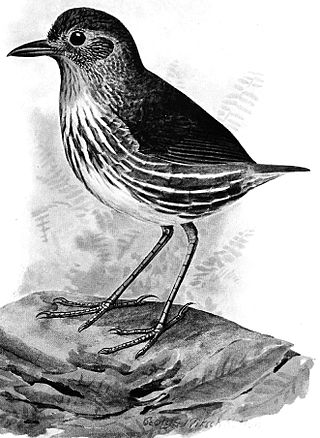
The Santa Marta antpitta is a Vulnerable species of bird in the family Grallariidae. It is endemic to Colombia.
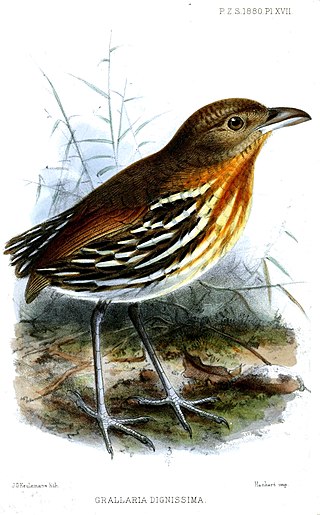
The ochre-striped antpitta is a species of bird in the family Grallariidae. It is found in Colombia, Ecuador, and Peru.

The rufous-faced antpitta is a species of bird in the family Grallariidae. It is endemic to Bolivia.

The great antpitta is a Near Threatened species of bird in the family Grallariidae. It is endemic to Venezuela.

The scaled antpitta is a species of bird in the family Grallariidae. It is found in Bolivia, Brazil, Colombia, Costa Rica, Ecuador, El Salvador, Guatemala, Guyana, Honduras, Mexico, Nicaragua, Panama, Peru, Trinidad and Tobago, and Venezuela.

The plain-backed antpitta is a species of bird in the family Grallariidae. It is found in Colombia, Ecuador, Peru, and Venezuela.

The chestnut-crowned antpitta is a species of bird in the family Grallariidae. It is found in Colombia, Ecuador, Peru, and Venezuela.
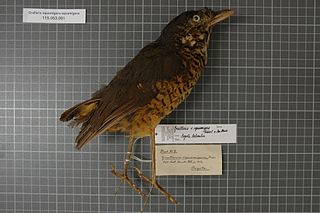
The undulated antpitta is a bird in the family Grallariidae. It is found in Bolivia, Colombia, Ecuador, Peru, and Venezuela.

The variegated antpitta is a species of bird in the family Grallariidae. It is found in Argentina, Brazil, Colombia, the Guianas, Paraguay, Peru, and Venezuela.
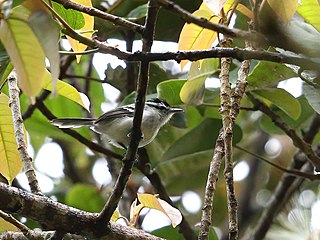
The creamy-bellied antwren is a species of bird in subfamily Thamnophilinae of family Thamnophilidae, the "typical antbirds". It is endemic to Peru.
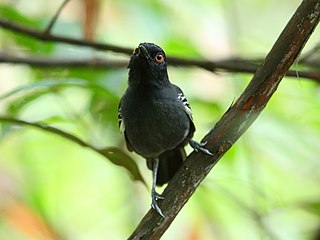
The black-tailed antbird is a Near Threatened species of bird in subfamily Thamnophilinae of family Thamnophilidae, the "typical antbirds". It is found in Brazil, Colombia, and Peru.

The necklaced spinetail is a species of ovenbird in the family Furnariidae. It is found in Ecuador and Peru.





















